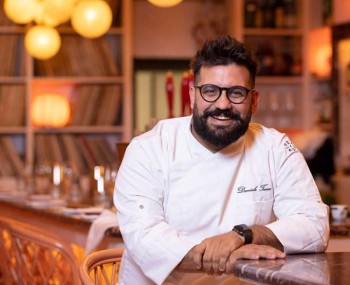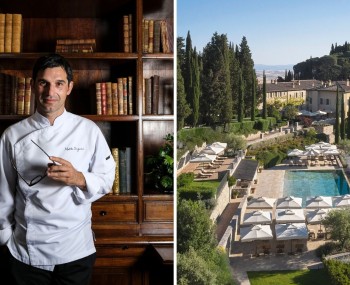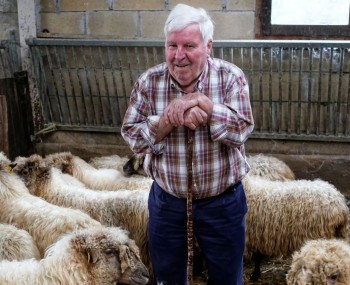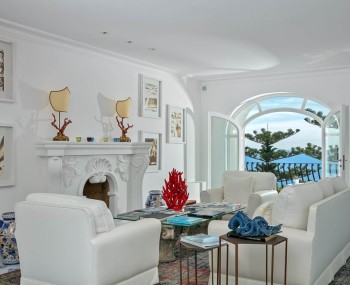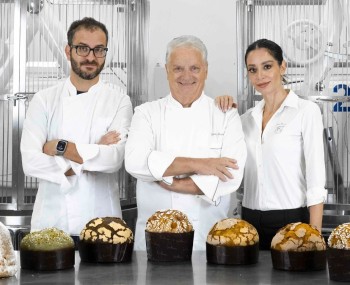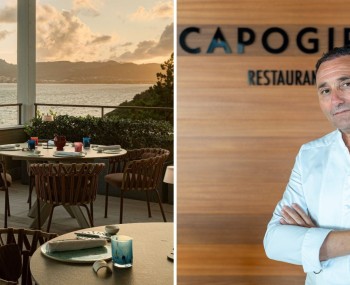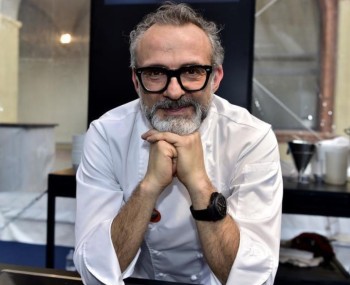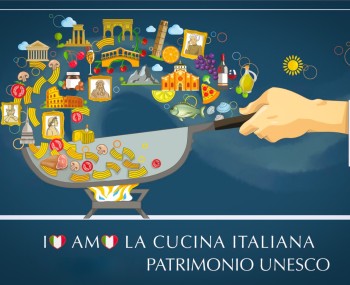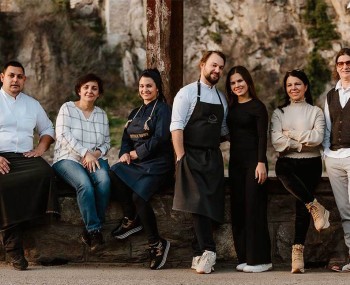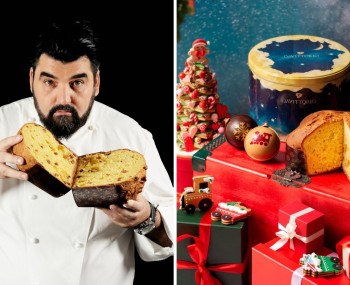Alessandro Dal Degan and Enrico Maglio's culinary game in Asiago continues to flow effortlessly. Only blindfolded tasting menus, with over 20 samplings, a sound carpet based on common sensory frequencies, and a pairing of "liquid" dishes that rebalance the alcoholic component by draping sexy veils over the ingredients.
Photos by Lido Vannucchi
The restaurant
"Everything has changed here," Dal Degan cuts in, welcoming guests into the unpretentious spaces of what is now an osteria. And then he begins to narrate: how the bar was converted in 2019, just before the closures, and how upon reopening, the old dream of a restaurant with a handful of covers serving a single exclusive tasting menu. Strengthened by the urgency to save as much as possible following the set back of the closures, faced with the alternative of shutting down and throwing away ten years of history. The operation was intended to last until a return to normality, but the response was such that it kept defining itself better and better.
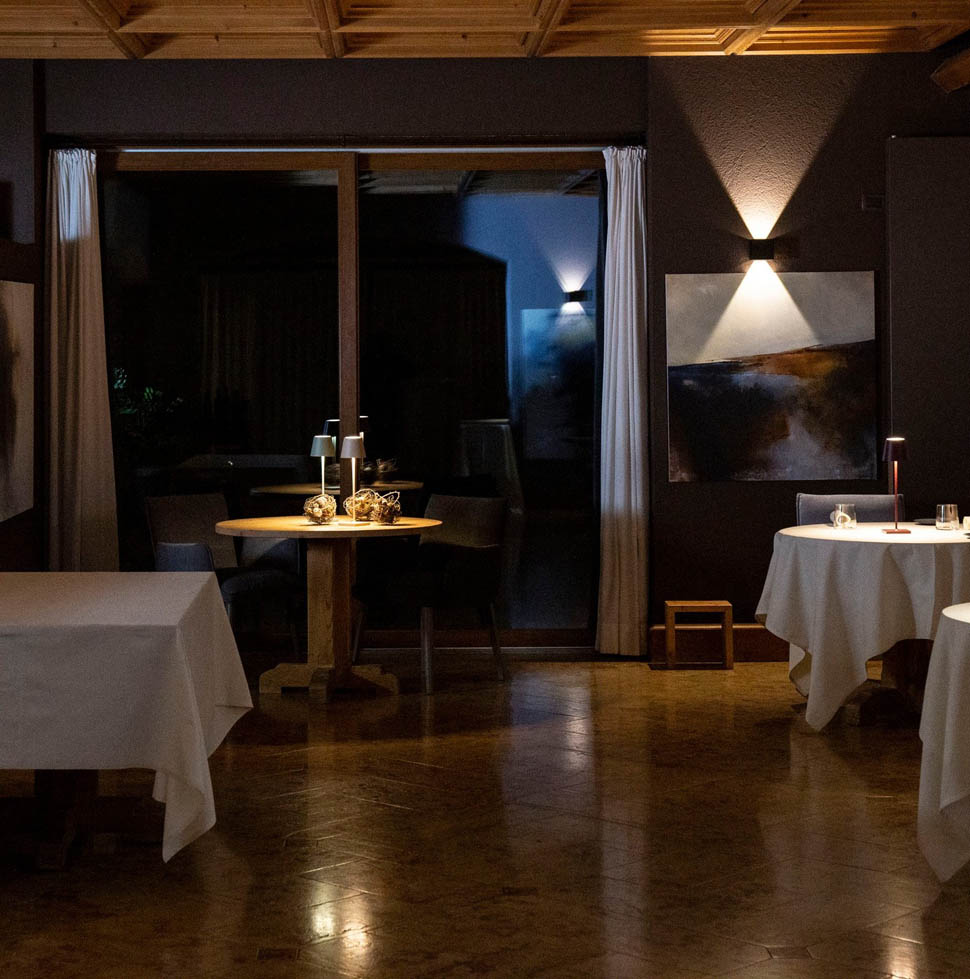
In practice, the gourmet restaurant is open eight months a year, four in winter and four in summer; during the closure, however, the osteria remains open, with the exception of about twenty days of vacation. And it's precisely that, never seen as a second-rate option, that allows the gourmet restaurant to operate with maximum freedom, without any economic concerns whatsoever. A drawer of quality that pays off in the search for excellence.

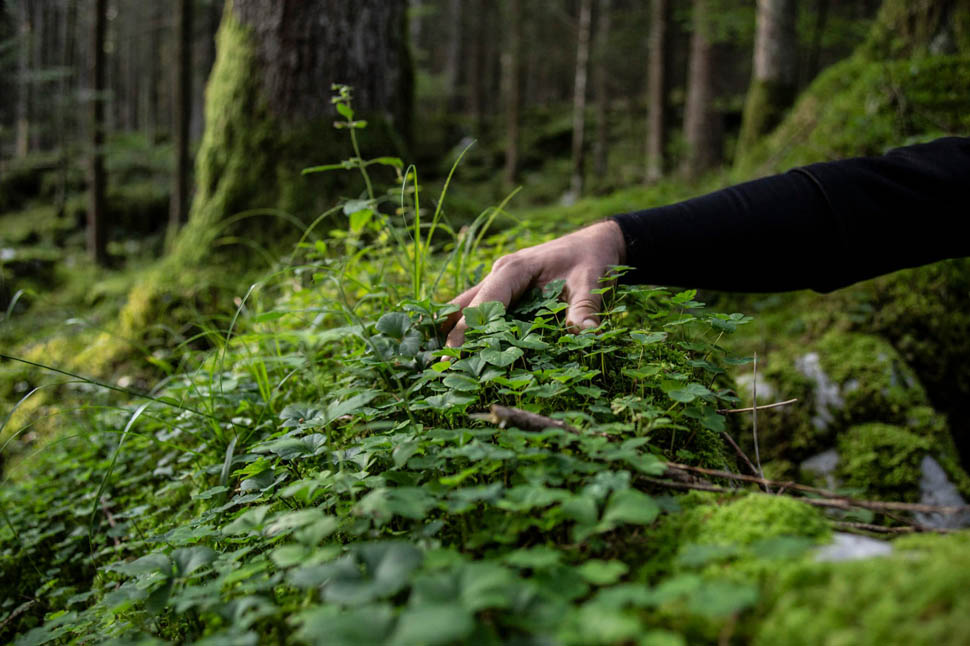
The tasting menu was immediately titled "On the Path," alluding on one hand to the creative journey of the restaurant, and on the other to the ups and downs of a mountain trekking session, emulated in the mouth. It changes twice a year, with 15-20% seasonal variations, and includes 26 tastings, never to be repeated. They are served in about a dozen courses, sometimes multiple, but linked by a common theme. "During the two months off, we don't focus so much on the tastings, which we continuously execute, but on finding a logical thread in the menu, considering non-repetition, lightness, and the variety of flavors in the dishes," explains Dal Degan. "There's a maniacal logic from start to finish, so much so that the tastings are the survivors of an almost double total, for sequencing reasons." A highly structured formula, operating on its own set of principles.
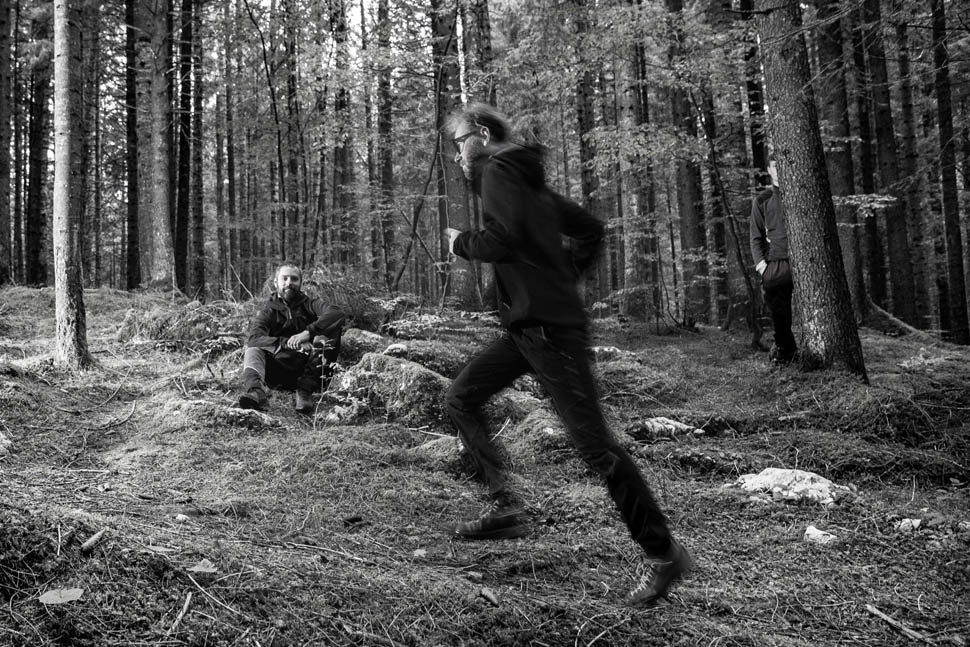
The other half of La Tana, sommelier Enrico Maglio, has raised another theme: "I'd like, not to say eliminate, but halve the alcohol in the pairing." Not for fashion, but to meet the needs of those who ultimately have to drive back, simply don't want to or can't drink. Instead of the usual, endless sequence of glasses, Maglio worked with Dal Degan on "liquid dishes," derived from the same elements as the courses, alternated with non-alcoholic cocktails through cooking, wines, and beers.

They are conceived as a gustatory continuation, which sometimes adds notes of acidity, but in fact are laid over the dishes like sexy and transparent veils, much more neutral than the water envisioned by Marchesi. This approach also brings closer the goal of zero waste, pursued in synergy with the osteria. The same menu is shared where an increasingly structured offer calls for the opening of prestigous bottles.
The kitchen
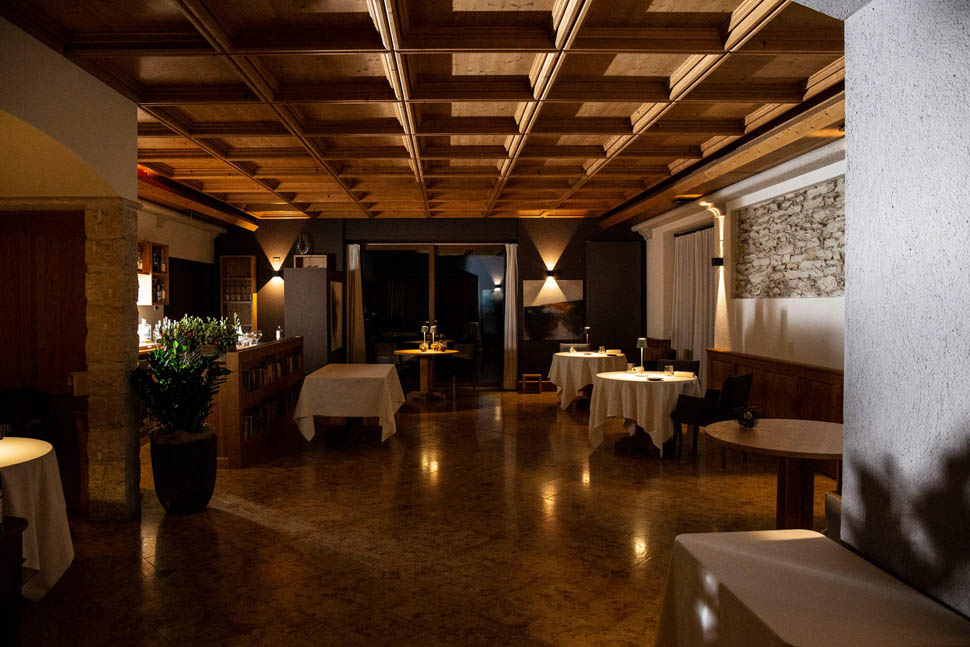
The choice is therefore between the menu with liquid dishes (which many associate with a bottle on the table) and the one without, priced at 350 and 220 euros respectively. Guests arrive simultaneously, and throughout the meal they are accompanied by a background music sequence studied by a professional, to associate musical frequencies with those of the dishes. There are no amuse-bouches, except for playful cicchetti, almost Venetian, starters, first or second courses, nor pre-desserts or desserts. Also because salt is absent from all dishes, which can only be essential (like cod) or from concentrations and associations; likewise, sugar is also missing, although in pastry it also serves as an essential element, so you end up with other dishes leaning towards sweetness.

"This is now an immersive experience, it means completely stepping out of the norms of starred restaurants, doing what we like. We also have to explain that over the years we have built a network of 70 micro-producers, like Marco, a guy who grows tomatoes in summer, onions and potatoes in winter, or Antonio, a seventy-year-old fisherman who only gives us moeche and schie from the lagoon. Small businesses that produce amazing products, but might not have the strength to be in the market. And for the collective growth of the territory, it's beautiful. Without being labeled as a mountain restaurant for that, a factor that initially made us known, but then became a straitjacket. We're more of a restaurant in the mountains, aiming to maximize the appreciation of the Veneto region in general." Here, much like a historian, Dal Degan narrates the multi-century bond with the Serenissima, from which spices and fish arrived, in exchange for timber for the palafittes of the palaces.

The plan follows an anabasis, from the Adriatic coast to the plateau, with ingredients and its potential at the center of a new gustatory game. It wouldn't make much sense to describe in detail over 26 tastings, but rather to outline the development of a complex journey. It is accompanied by bread that is also the subject of continuous research, so much so that it often moves to the osteria from one year to the next. This is produced without yeast, neither sourdough nor beer, but grows through the fermentation of cereals and seeds inside, also used for flavoring purposes.
The dishes
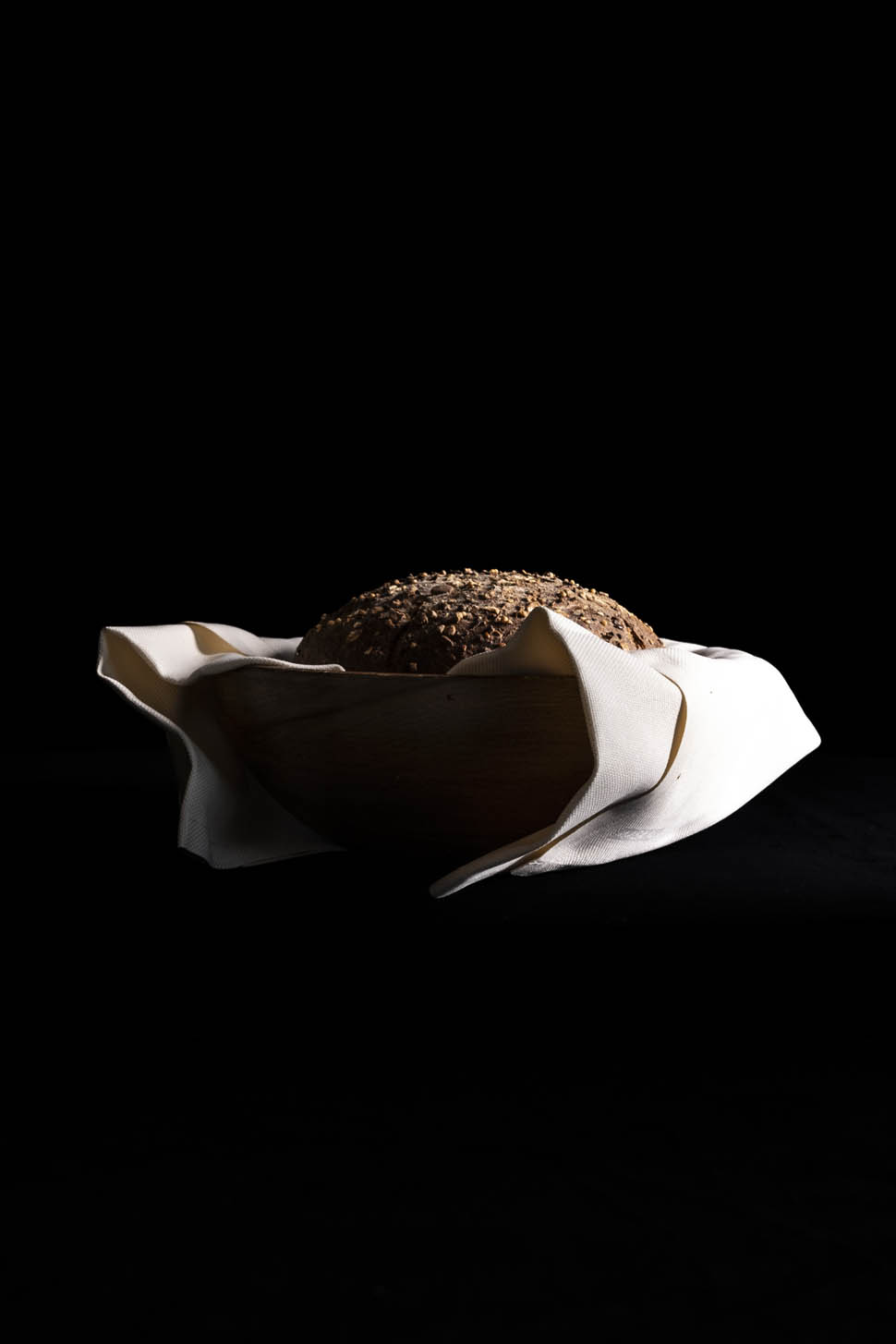
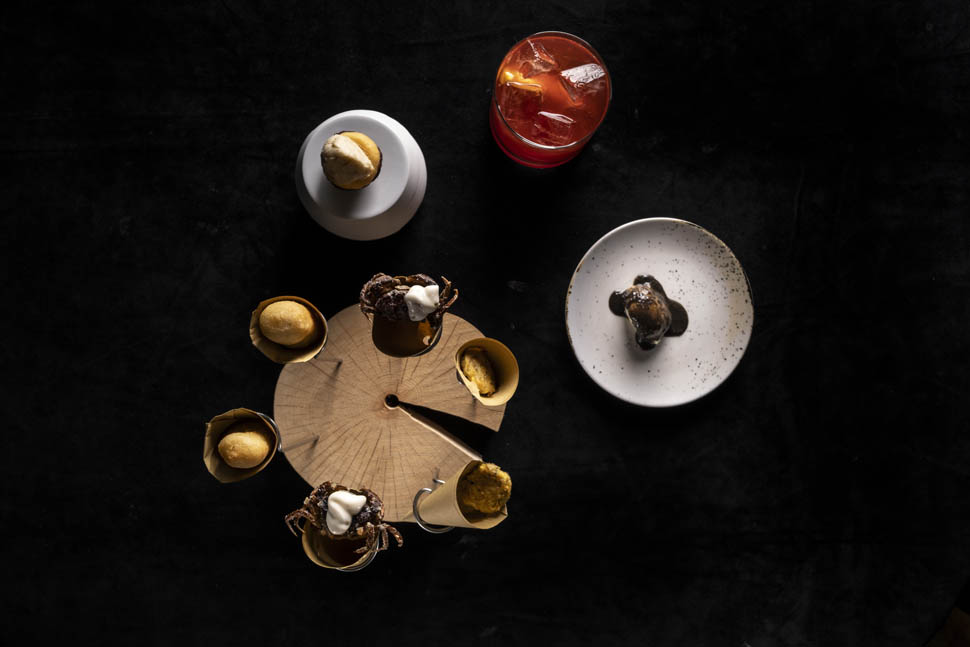
After the Venetian aperitif and the surprising cabbage, coconut, and caviar biscuit, the first course is dedicated to bluefish: vicentina needlefish, mackerel with black cabbage, mustard, and honey, herring, egg, and onion. A whisky sour is served, bringing the missing acidity through the maceration of heads and bones, contributing to zero waste. The break is a single vegetable dish leaning towards sweetness, somewhat understatedly called "swiss chard with butter," to which Maglio cleverly pairs an irresistible Gueuze. Following in the same function are the grilled Rubbio leek with lime and leek broth and the radicchio and malt, as you cross Treviso from the coast to the plateau.
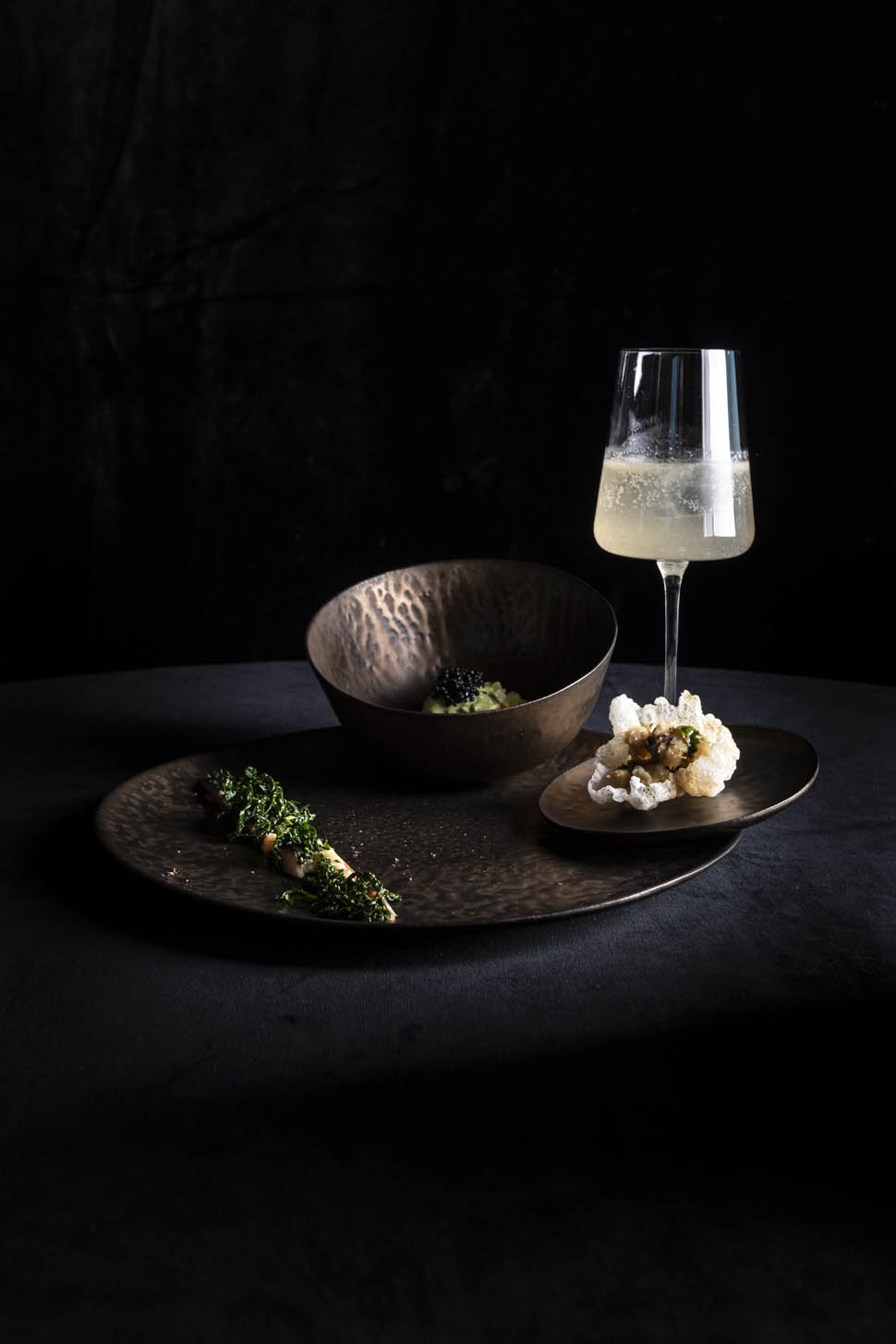
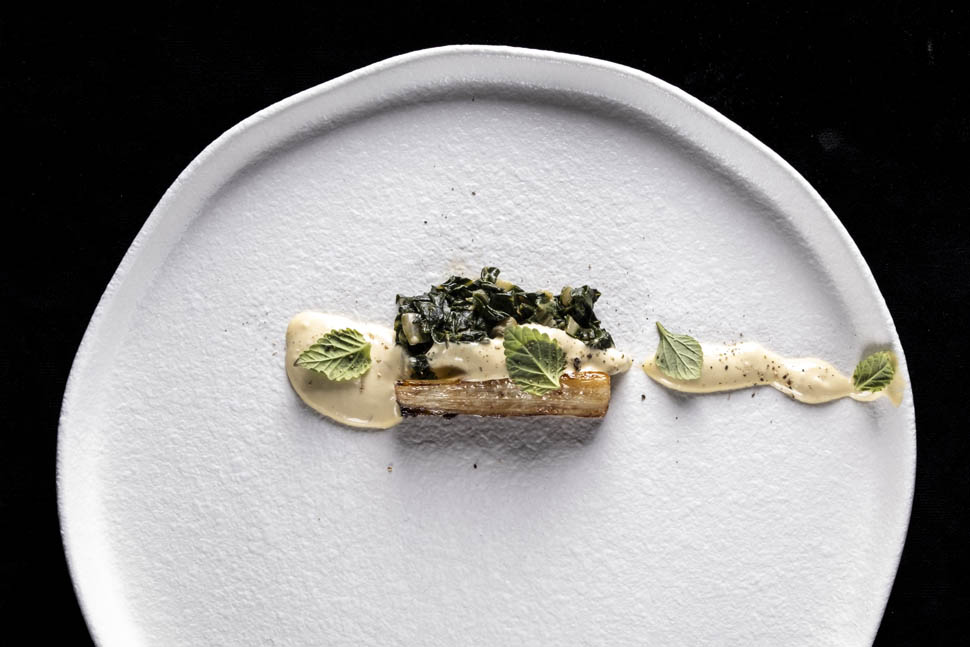
Then the seafood comes in two parts: marinated clams with clam meringue, clam chowder, smoked paprika, and wild celery stalks; mussels with spicy tom kha kai crème brûlée style; buttered oyster with artichokes and peanuts; grilled capalonga with barbecue sauce and oxalis; delicious sea lemon with iceberg lettuce, watercress, and pine nuts; pecorino gratin scallop with emulsified quail ragout with coral; grilled buccinum soup with capon broth and seaweed; lastly, pork cheek, umibudo, and sea urchins, for the transition to meat.
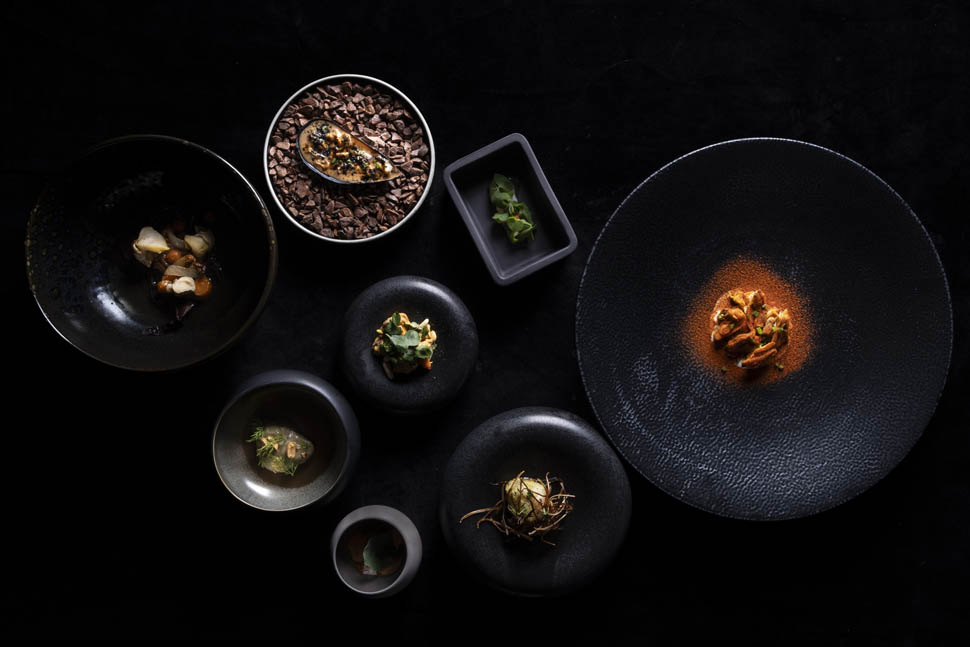
The arrival in the mountains is marked by the Asiago peasant culture, where courtyard animals had little to eat and were used entirely. So the fried pig's nose with turnip tops and carbonara sauce (actually passion fruit and Asiago cheese), the sweetbread with spices, peel broth, and tomato preserved in oil; the rooster combs with fennel and fake fermented mustard.
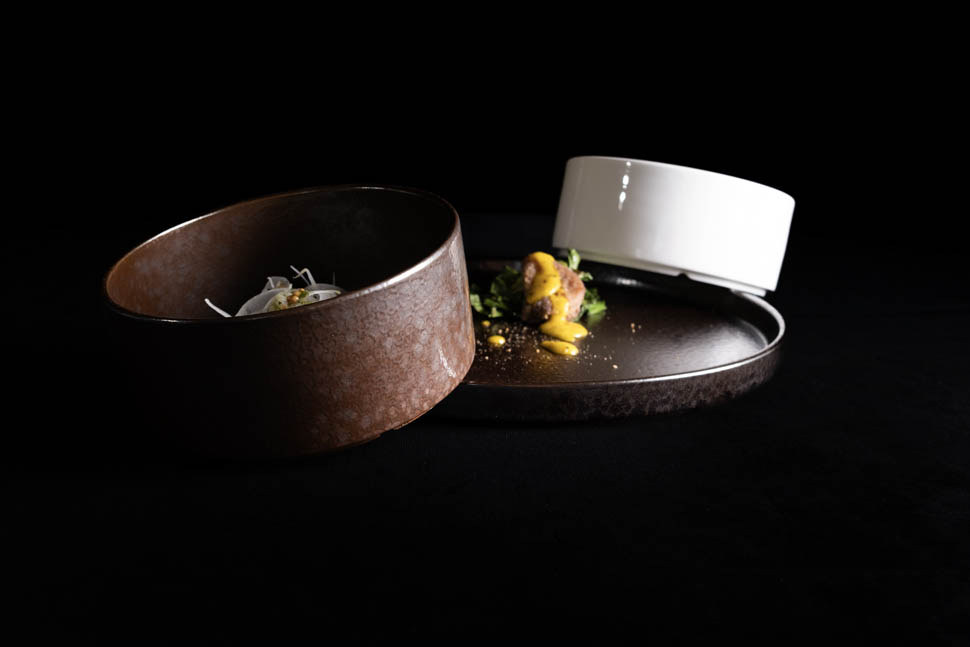
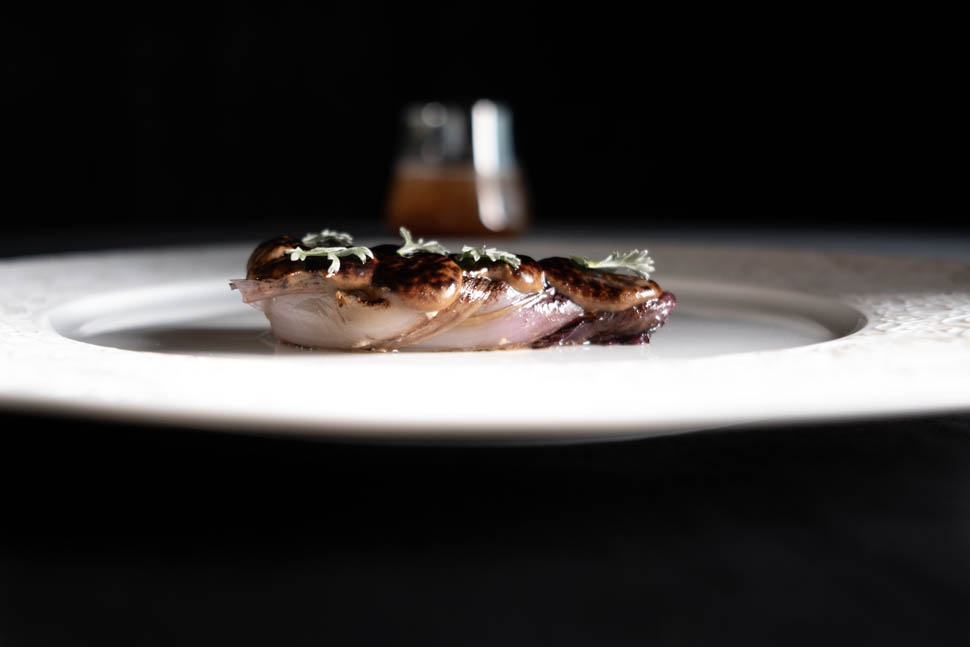
Then the land becomes mushrooms: namely, trumpets of the dead with salty zabaglione with peated whiskey, fried cardoncello with chamomile with oyster water, morel soup; as a liquid dish, black tea from smoked stems infused in scrap broth. Then there's a dive into history: the Meelkraut (literally "herbs together"), a kind of sausage made from herbs collected from spring to autumn, fermented like sauerkraut and used in winter when the snow suffocates the vegetable. Wrapped in pork netting or intestine, after being dried with onion, they were grilled overnight. Here with a naturally spicy sauce obtained by cold extraction from scraps. The accompaniment is Le Bergeron Comme Avant by Anne-Sophie and Jean-François Quénard, from Savoie.
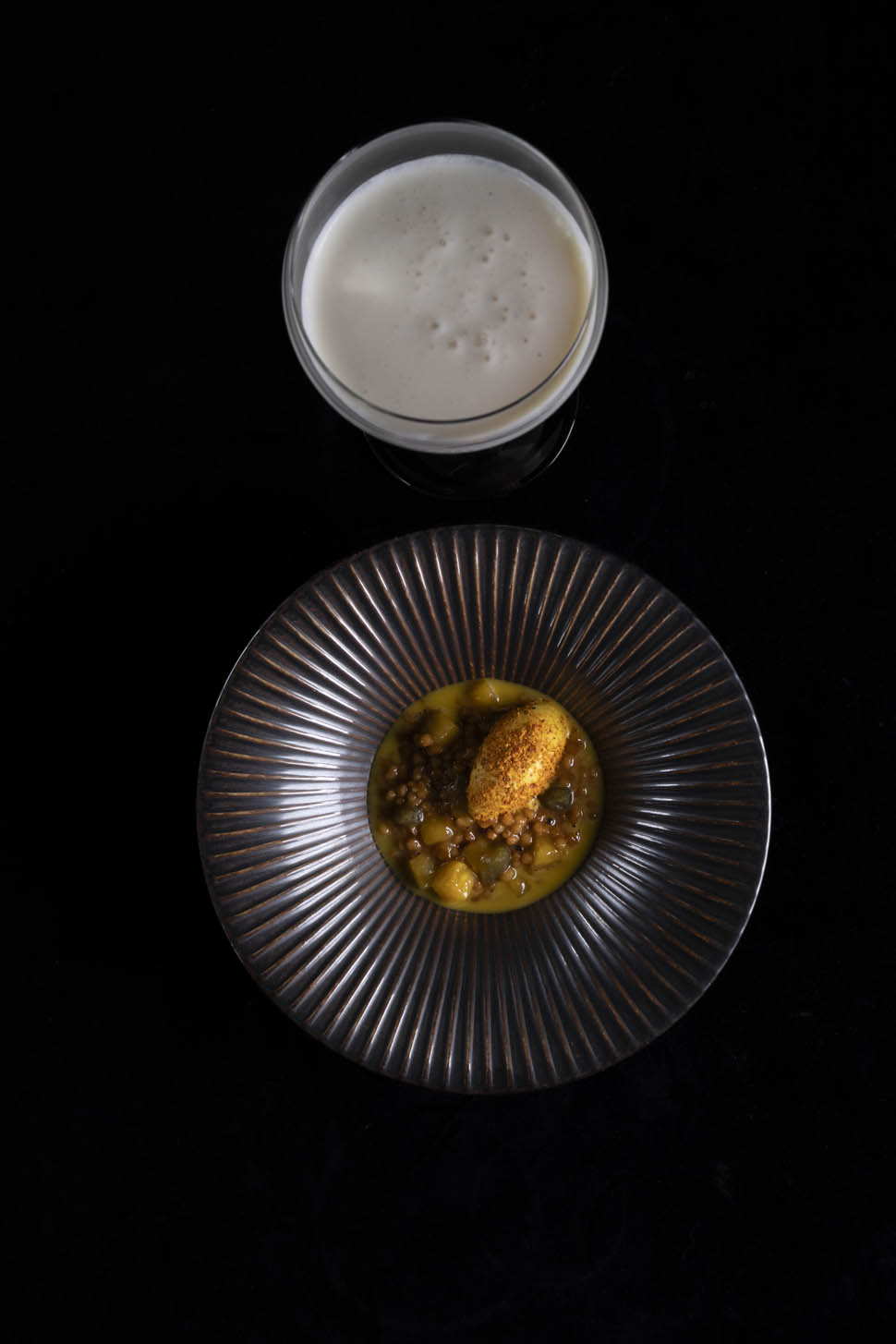
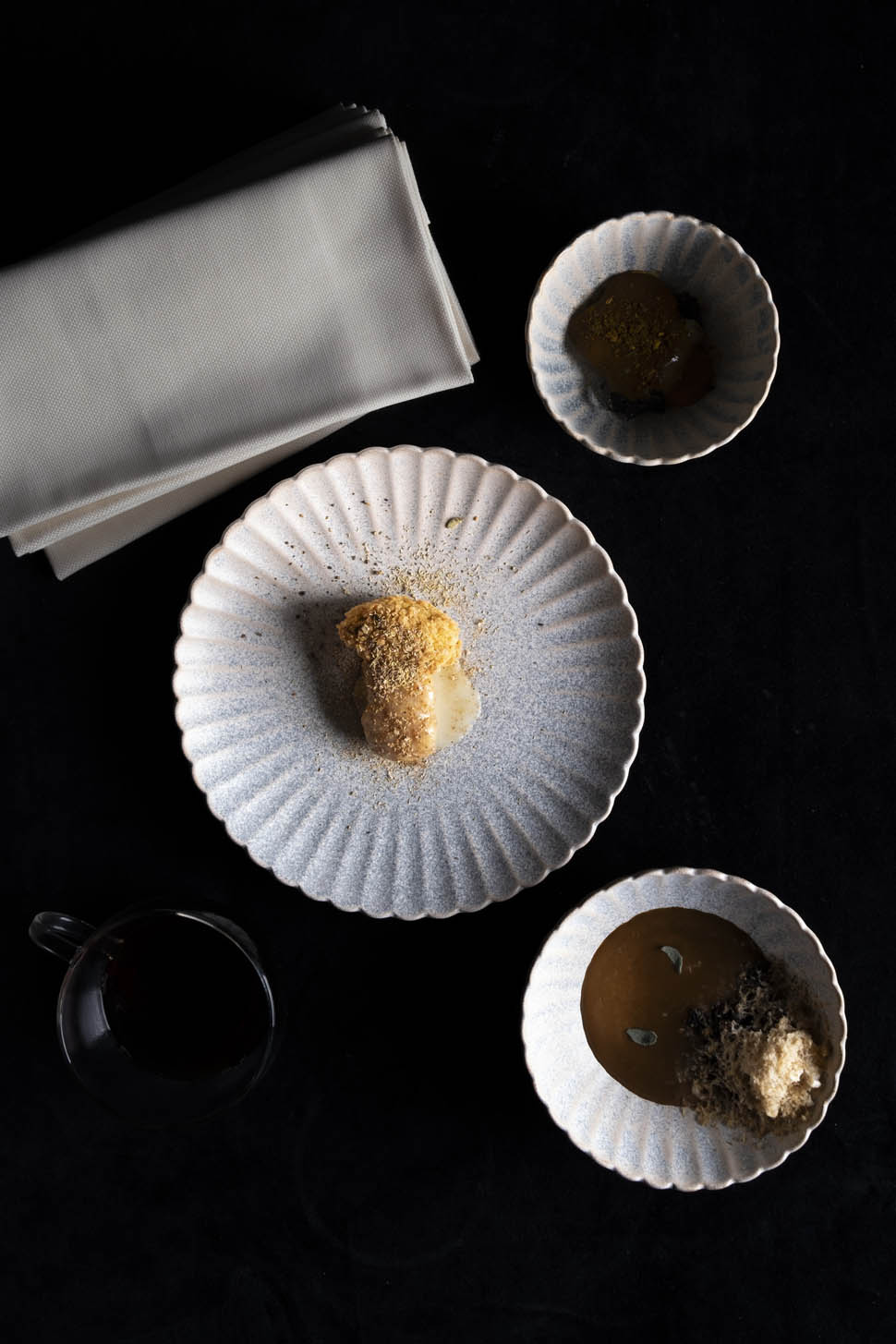
To stand in for desserts, there are dishes with a sweet tendency: Gratadei, semolina pasta cooked in grilled fruit broth, dressed with fresh fruit, acidulated fig leaf gel, and spice ice cream; ice cream achieved from syrup traditionally made from mugo pine cones macerated in honey, for sore throat and cough, with the addition of buckwheat, because the cones were tender and chewed, and Alpine lichen salad; the finger to be dipped in aged syrup like Balsamic and in sparkling powder of wild herbs. Preceding the closure focused on citrus and fundamental tastes: for umami, marinated quail egg with blood orange, wild licorice, and lavender; for spicy, cedar with goat cheese and basil; for bitter cocoa, bergamot, and sumac; for sweet, pink grapefruit with grapefruit caramel; for fat, yuzu cake with lemon ice cream and its zest in infusion.
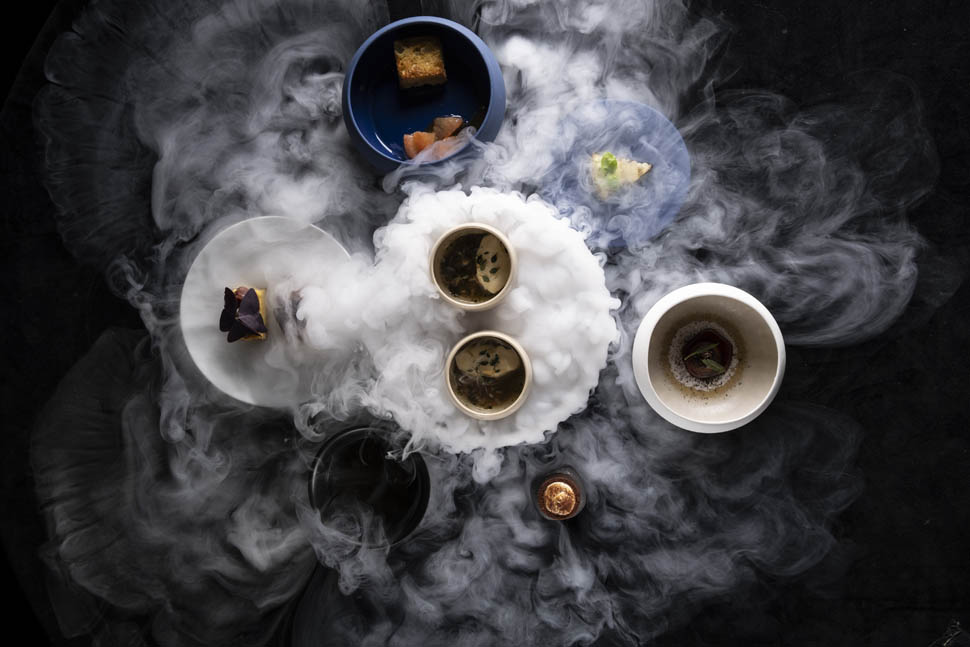
Contacts
La Tana Gourmet
Via Kaberlaba, 19, 36012 Asiago VI

